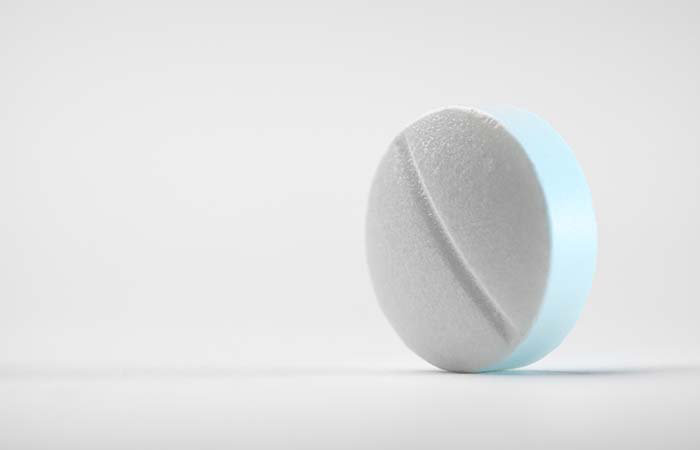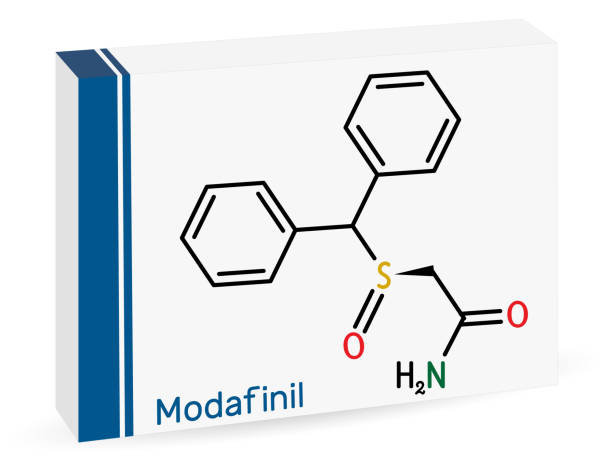Modafinil and Lexapro: Safety, Efficacy, and Clinical Insights
Modafinil and Lexapro are widely used medications with different purposes—Modafinil for sleep disorders and Lexapro as an antidepressant. Recently, interest has grown in combining these two drugs to improve treatment outcomes, especially for individuals with depression. Exploring their safety, effectiveness, and clinical insights helps clarify the potential benefits and risks of using them together.
Modafinil: An Overview
Modafinil is a medication known for its wakefulness-promoting properties. It is primarily prescribed for conditions such as narcolepsy, shift work sleep disorder, and obstructive sleep apnea. Modafinil works by influencing various neurotransmitters in the brain, including dopamine, which plays a crucial role in regulating sleep-wake cycles and alertness.
Aside from its approved uses, Modafinil is often used off-label for its cognitive-enhancing effects. Many individuals report improvements in alertness, memory, energy levels, and focus. Despite its benefits, Modafinil can cause side effects such as headaches, nausea, anxiety, and insomnia. It is a Schedule IV controlled substance in the United States, indicating a low potential for abuse and dependence compared to other stimulants.
Lexapro: An Overview
Lexapro, known generically as escitalopram, is a selective serotonin reuptake inhibitor (SSRI) commonly prescribed to treat depression and generalized anxiety disorder. Lexapro works by increasing the levels of serotonin, a neurotransmitter that plays a significant role in mood regulation. By preventing the reuptake of serotonin into the presynaptic neuron, Lexapro helps maintain optimal levels of this neurotransmitter in the brain.
While Lexapro is generally well-tolerated, it can cause side effects such as headache, dry mouth, restlessness, fatigue, and insomnia. Patients must use Lexapro under the supervision of a healthcare provider, as it is not recommended for individuals under 12 years old or for certain populations, such as those in the late stages of pregnancy.
Potential Benefits of Combining Modafinil and Lexapro
Enhanced Antidepressant Efficacy
Combining Modafinil with Lexapro has shown promise in enhancing the efficacy of antidepressant treatment. Studies, including those conducted by the University of Cambridge and other institutions, have demonstrated that the combination can improve the severity of depression and increase remission rates. This is particularly beneficial for patients with treatment-resistant depression, who often see limited benefits from antidepressants alone.
Cognitive Function Improvements
Modafinil is known for its cognitive-enhancing properties, which can be particularly beneficial for individuals with depressive disorders experiencing cognitive deficits. Research indicates that Modafinil can improve working memory, attention, and alertness. These improvements can complement the mood-enhancing effects of Lexapro, providing a more comprehensive treatment approach.
Alleviation of Residual Depressive Symptoms
Despite the effectiveness of Lexapro in treating depression, some patients continue to experience residual symptoms such as fatigue and insomnia. Modafinil has been shown to address these symptoms effectively. By promoting wakefulness and reducing fatigue, Modafinil can help patients feel more alert and energized, contributing to overall better mental health and quality of life.
Safety Considerations
Potential Interactions
When combining Modafinil and Lexapro, it is essential to be aware of potential drug interactions. One significant concern is the risk of serotonin syndrome, a potentially life-threatening condition resulting from excessive serotonin levels in the brain. Symptoms include confusion, hallucination, seizure, extreme changes in blood pressure, and increased heart rate. It is crucial to monitor patients closely and adjust dosages as necessary to minimize this risk.
Common Side Effects
Both Modafinil and Lexapro have their own set of side effects, and taking them together may increase the likelihood of experiencing these effects. Common side effects include headache, nausea, anxiety, gastrointestinal issues, and insomnia. Healthcare providers should carefully evaluate the risk-benefit profile for each patient before recommending this combination.
Rare but Serious Side Effects
In rare cases, combining Modafinil and Lexapro can lead to severe side effects such as severe allergic reactions, seizures, and heart rhythm irregularities. Patients should be informed of these risks and advised to seek immediate medical attention if they experience any concerning symptoms.
Monitoring and Supervision
To ensure safety, healthcare providers need to monitor patients closely when prescribing Modafinil and Lexapro together. Regular follow-ups and appropriate diagnostic tests can help detect any adverse reactions early and allow for timely intervention. Patients should also be educated on the importance of adhering to prescribed dosages and reporting any side effects promptly.
Clinical Studies and Research Findings
Summary of Key Studies
Several key studies have explored the effects of combining Modafinil and Lexapro. A notable study conducted by the University of Cambridge, East London University, and King’s College London found that this combination effectively reduced the severity of depression and improved remission rates. The study involved reviewing multiple trials and analyzing data from patients with both unipolar and bipolar depression.
Methodologies and Participant Demographics
The studies reviewed varied in their methodologies and participant demographics. Some were randomized controlled trials, while others were open-label studies. The participants included individuals with major depressive disorder who had not fully responded to traditional antidepressant treatments. The combination of Modafinil and Lexapro was generally well-tolerated, with most patients reporting minimal side effects.
Interpretation of Findings
The research indicates that adding Modafinil to Lexapro treatment can provide significant benefits for patients with depression, particularly those with residual symptoms or cognitive deficits. However, the studies also highlight the need for careful patient selection and monitoring to avoid potential adverse effects. Further research is needed to establish long-term safety and efficacy conclusively.
Implications for Clinical Practice
The findings suggest that healthcare providers should consider Modafinil as an adjunct therapy for patients with depression who do not fully respond to SSRIs like Lexapro. By enhancing cognitive function and alleviating residual symptoms, Modafinil can help improve overall treatment outcomes. However, clinicians must weigh the benefits against the risks and monitor patients closely to ensure safety.
Practical Considerations for Clinicians
Guidelines for Prescribing Modafinil and Lexapro Together
When considering the combination of Modafinil and Lexapro, clinicians should follow specific guidelines to ensure patient safety and treatment efficacy. Start with the lowest possible doses and gradually titrate based on patient response and tolerance. Modafinil is typically prescribed at 100-200 mg per day, while Lexapro dosages range from 10-20 mg per day.
Monitoring Protocols
Regular monitoring is crucial when patients are on this combination therapy. Clinicians should schedule frequent follow-up appointments to assess the patient’s response to treatment and monitor for any side effects. Regular blood pressure checks, heart rate monitoring, and mental health assessments are recommended to detect any adverse reactions early.
Patient Selection Criteria
Not all patients are suitable candidates for this combination therapy. Ideal candidates are those who have not fully responded to Lexapro alone, particularly those experiencing residual fatigue and cognitive impairment. Patients with a history of substance abuse, severe cardiovascular conditions, or those at risk for serotonin syndrome should be excluded from this treatment approach.
Risk Assessment and Management Strategies
A thorough risk assessment should be conducted before starting combination therapy. Evaluate the patient’s medical history, current medications, and potential for drug interactions. Develop a comprehensive management plan that includes patient education on recognizing side effects, adherence to prescribed dosages, and the importance of regular follow-ups.
Patient Experiences and Case Studies
Anecdotal Evidence and Patient Testimonials
Many patients have reported positive outcomes when combining Modafinil and Lexapro. Commonly cited benefits include increased alertness, improved mood, and reduced fatigue. However, individual experiences vary, and some patients report initial improvements followed by a plateau or emergence of side effects.
Case Studies Illustrating Real-World Applications
Case Study 1: Treatment-Resistant Depression
A 45-year-old patient with treatment-resistant depression showed significant improvement after adding Modafinil to their Lexapro regimen. The patient reported enhanced energy levels and better cognitive function, which allowed them to return to work and improve their quality of life.
Case Study 2: Managing Residual Symptoms
A 30-year-old patient on Lexapro for depression continued to experience fatigue and poor concentration. After introducing Modafinil, the patient reported significant improvements in energy and mental clarity, leading to better overall treatment satisfaction.
Lessons Learned and Best Practices
These case studies highlight the importance of individualized treatment plans and close monitoring. Clinicians should remain vigilant for any adverse effects and be prepared to adjust dosages or discontinue treatment if necessary. Open communication with patients about their experiences and concerns is essential for optimizing treatment outcomes.
Alternative Approaches and Adjunct Therapies
Exploring Other Combinations and Treatment Options
While the combination of Modafinil and Lexapro shows promise, other treatment options may also be effective. For instance, combining Lexapro with other cognitive enhancers or different classes of antidepressants might yield similar benefits. It is essential to tailor the treatment approach to each patient’s unique needs.
Non-Pharmacological Interventions
In addition to medication, non-pharmacological interventions can play a significant role in managing depression and cognitive impairment. These include:
- Exercise: Regular physical activity has been shown to improve mood and cognitive function.
- Sleep Hygiene: Good sleep practices can enhance the effectiveness of antidepressants and reduce fatigue.
- Diet: A balanced diet rich in essential nutrients supports overall mental health.
- Therapy: Cognitive-behavioral therapy (CBT) and other forms of psychotherapy can provide additional support and address underlying issues contributing to depression.
Role of Lifestyle Modifications and Supportive Therapies
Encouraging patients to adopt healthy lifestyle habits can complement their medication regimen. This includes regular exercise, proper sleep hygiene, and a nutritious diet. Supportive therapies such as group therapy or mindfulness practices can also enhance treatment outcomes and provide patients with additional coping mechanisms.
Conclusion
The combination of Modafinil and Lexapro offers a promising approach for patients with depression, particularly those who do not fully respond to SSRIs alone. By enhancing cognitive function and alleviating residual symptoms, this combination can improve overall treatment outcomes. However, careful patient selection, close monitoring, and adherence to prescribed guidelines are essential to ensure safety and efficacy. Further research is needed to establish long-term benefits and optimize treatment protocols.








